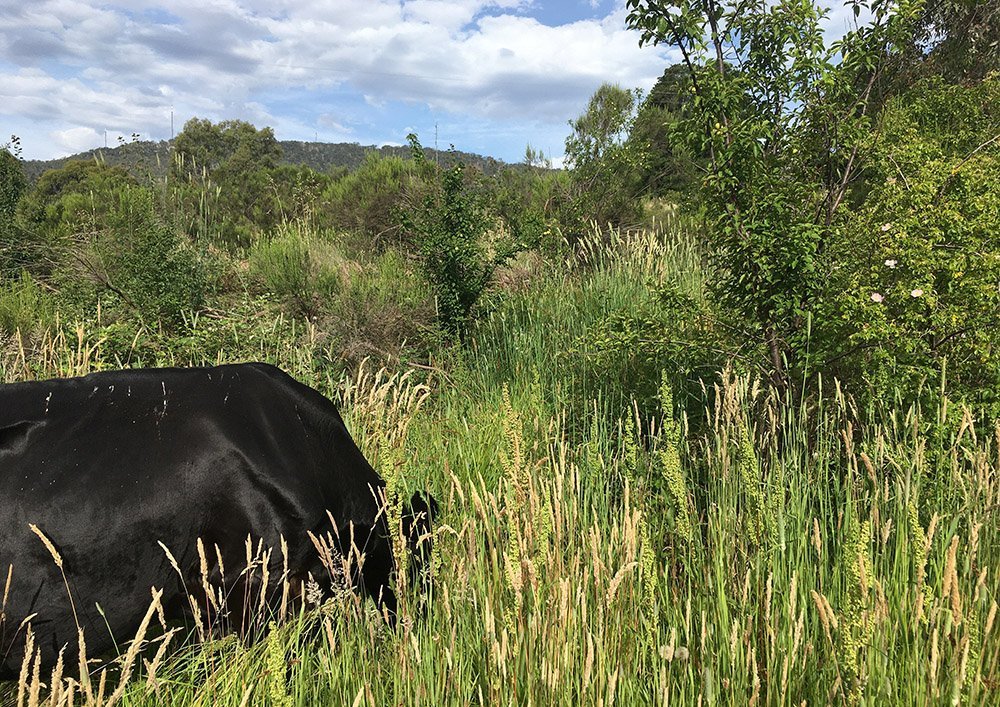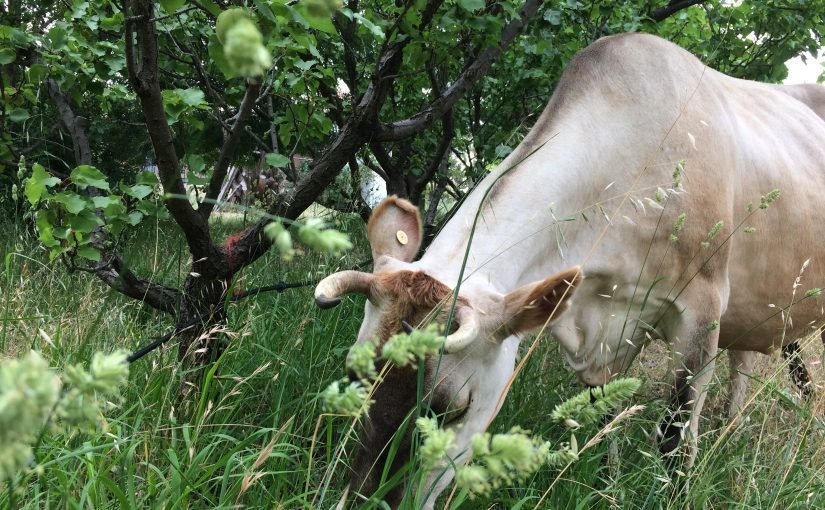What a magnificent Spring to be a dairy farmer in Central Victoria. The grass is vibrant, the sun is out, the soils moist and the cows couldn’t be happier.

I thought I’d take this opportunity to tell you a little about what the cows eat to create their beautiful milk. I think it’s magic that they can convert grass into milk and while I’m sure there is a little magic in there, mostly it is an equation of inputs = outputs. This is why I always say that to have great milk you must follow the chain back. Nutritious milk comes from healthy cows, who have a healthy gut function, who eat nutrient dense feed which comes from a well balanced soil. Once again we come back to this long known, often forgotten fact, that human health is completely dependent on soil health.
For about two months every Spring, milk costs about 1/3 to produce as it does the rest of the year in Central Victoria. Not known as a dairy region, for much of the year the pasture feed quality is too low to support dairy cattle and supplementation is needed. Often you may look at a paddock and think ‘there’s grass there, can’t they eat that’ and for any non lactating animal you may be right. You may think my girls are just spoilt and fussy; however if you push a dairy cow to eat something because she has nothing else to eat, the supply and quality of her milk will drop, which is counterproductive to the whole operation.

We practise holistic/managed grazing here on the farm. The mobile milking parlour gives us the flexibility to be always on the move following the grass, then giving it plenty of time to recover. More on this to come in a future blog. The seasons are constantly changing: Summer pasture rotation is often more about avoiding bare ground than it is providing growing feed. With an early Autumn break we often get in one quick rotation of the short green pick before the ground gets cold and growth really slows down over the winter months. Then Spring comes, grass regrowth/recovery can be a matter of days and we fly around the property trying to get the most out of pastures before they bolt to seed.
All of the different feed stock effects the milk and we are constantly trying to balance their grazing feed with supplementation to have a constant product. Short green grass is high in sugars and often protein giving a sweet milk, rich in flavour. But at certain times there might be undesirable flavours present in the milk. We have one plant growing in some areas which is an allium grass which has a strong garlic smell. When you walk up to a cow grazing this grass the stench is intense. While this can actually be a good thing for the animals to flush any parasite out of their system, it does taint the milk. I know where the big patches of this grass are on the farm and reserve them for the dry animals, however there will always be a few plants the milkers eat and sometimes in winter you may notice a slight garlic smell, strongest in the cream. This plant is a bulb, growing in and breaking up compacted ground, a wet summer will knock it out as the bulbs rot.

Many say capeweed taints the milk, however I’ve not had this experience. The cows actually milk very well off capeweed but it can very quickly give them metabolic problems, which in a ruminant leads to many other ailments such as feet problems, mastitis, milk fever, bloat etc. Capeweed is also a sign of bare ground over summer, nature doing the quickest thing it can to cover the ground. Unfortunately though, when it dies off in summer it then leaves a big bare patch again. Over this last 12 months we’ve seen the capeweed dramatically reduce on the farm and be replaced with clover. Now clover really does produce a good milk, but once again, too much of anything can be problematic.

The annual grasses are all starting to go to seed at the moment. The big change I notice is the brome grass. The cows love it when its growing but the second it grows a seed head they won’t touch it. You can see in this photo that they have eaten the clover to the ground and avoided the patches of brome.

I also thought I’d share with you some numbers around the cost of feed v milk produced throughout the year.

You can see here the cost difference in producing milk in Summer (Feb $1.25 ltr) vs Spring (Oct 34c ltr). Keeping in mind this is just the cost of feeding the animal, not the cost of labour, running the factory, farm and sales. The long term aim is to be on a property which could grow much more of our feed, reducing this cost. Currently we are reliant on the rich volcanic soils at Wombat Forest Organics for our hay, the cropping landscapes of Burrum Biodynamics for our grains and pulses, Waltanna farms for the linseed mix, oaten hay from Rathscar, Laucke for our bran and storm harvested kelp from Marrawah in Tassie. Everything certified organic from inspiring farmers working to regenerate out landscapes. As I write this though I realise that the production of every bottle of milk is much more a group effort, with the various contributors working as a community rather than me in isolation.

Our aim here is to be constantly building diversity of feed stocks for the animals so they are able to get all the nutrition they need to look after themselves and produce nutrient dense, delicious milk. When I close my eyes and dream of my farming future, it involves meadows with 100+ species of forbs and grasses, paddocks lined with tree fodder crops, sparkling clear water and of course, my lovely herd.


Leave a Reply